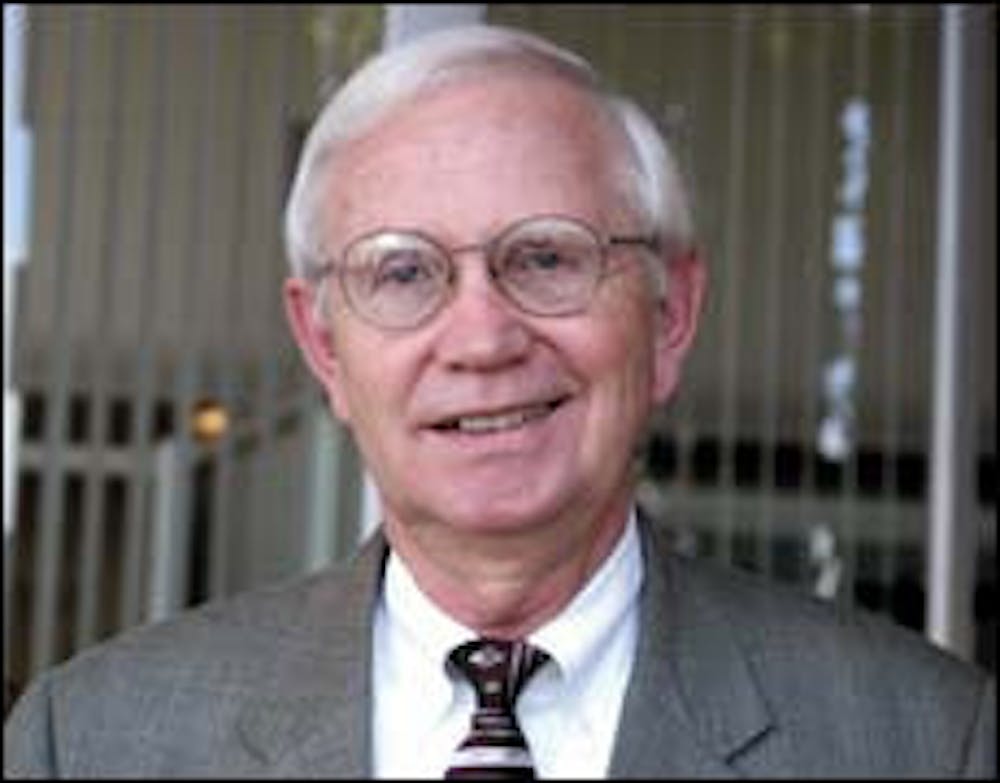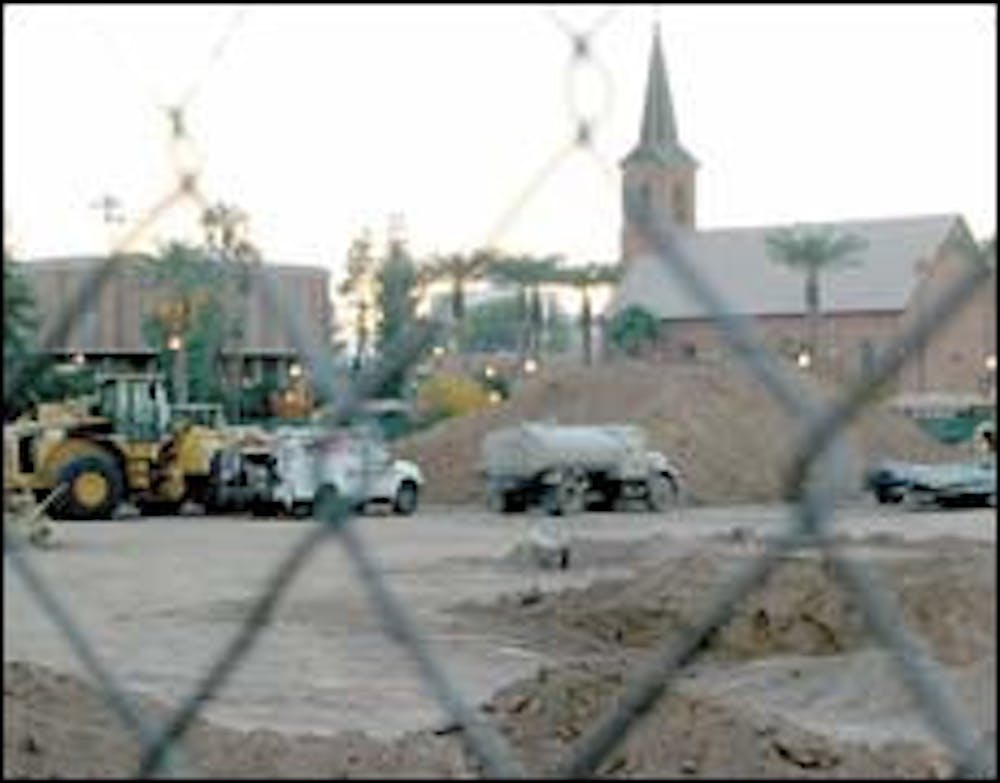Students expecting scholarships this fall returned to find their colleges scrambling to find money to cover the promised aid.
That promise usually is fulfilled by payouts from endowments managed by the ASU Foundation.
But this time, the economy had crippled the endowments that the organization manages. Many were "underwater," meaning that they had yielded no interest payouts.
The foundation halted some promised payouts to colleges until a solution to its financial straits could be devised.
Foundation officials now say that this crisis could have been avoided with better financial planning.
The crisis left colleges stranded with little financial support from the foundation. Although colleges are responsible for their financial obligations, they have always relied on funds from endowments managed by the foundation.
The colleges were forced to divert money from one internal account to another in a balancing act aimed at paying out the monies promised to students and professors.
That balancing act continues as the foundation now tries to prevent another funds crisis while planning for a greener future.
Breakdown in communication
At the beginning of November, almost four months after the funds crisis, ASU Provost Milton Glick issued a letter to the college deans describing what the plan was: less money would be paid from each endowment.
Glick said he and Foundation President Lonnie Ostrom developed a plan to distribute money to the needy colleges from both ASU and the foundation.
The ASU Foundation allocated $250,000 to assist the beleaguered colleges. ASU itself added another $250,000 in the form of grants and loans.
"We had students that needed to register for classes, had been promised a scholarship and the money wasn't there," Glick said. "Those are both moral and legal contracts."
All scholarship promises were kept, according to Glick, even before the full extent of the endowment problems was known. Glick said most scholarships were paid by late July and early August 2002.
Anne Schneider, dean of the College of Public Programs, said deans were uninformed of the foundation's problem and were left to discover it on their own.
"There was a time lag there, probably when the foundation realized there was a problem before we knew there was a problem," Schneider said. "There was a mistake in not letting us know quicker."
Mark Jacobs, dean of the Barrett Honors College, said he expects more communication from the foundation in the future.
"I would very much in future years like to hear what the payouts are going to be earlier," Jacobs said. "I know all the other deans would agree with that."
Untapped reserve
Public records, including the foundation's federal tax forms and audited financial statements, as well as interviews with University and foundation officials revealed that at the time of the crisis, the foundation had funds available to bail out the colleges.
Ostrom estimated that bailing out the colleges would have cost a total of $2 million, but at the time of the college financial crisis, the foundation held a reserve of around $6.8 million in "unrestricted funds."
Ostrom said the foundation could have used the reserve to bail out the colleges, but it needed to keep its reserve for emergencies and "expenses that could pop up, like health care increases," for the foundation staff.
According to Ostrom, the foundation historically paid out 5 percent of each endowment, a high number contributing to the lack of a safety net.
Despite losing almost $39 million in endowment value to the market for the fiscal years ending in June 2001 and June 2002, the foundation increased managerial expenses to more than $3.3 million in 2001 and $4.7 million in 2002.
Assets for the foundation in 2003 were more than $300 million for the first time.
In 2001, the foundation completed its six-year "Campaign for Leadership" fund-raising effort.
Foundation officials considered the campaign very successful; it pulled in $560 million in gift pledges after setting out to raise $300 million.
In the past year, it has received two $50 million gift pledges for the business and engineering schools, and another $10 million gift to the center for creative writing. But a pledge is different than actually having the money, and foundation officials do not expect all that money for several years.
The foundation has started construction on a new $50 million office building on College Avenue and University Drive.
Lowering college payouts
In hindsight, Ostrom said this fall's "confusion" with the endowments could have been avoided.
"Not everybody agrees with me in this University," Ostrom said, "but I think we ought to have paid out less [in the past]."
The foundation historically paid 5 percent from most endowments, but Ostrom said paying out 4.5 percent of the endowment might have allowed for more financial flexibility in the future.
"Now we would not have paid out as much money during those years when things were great," Ostrom said. "I think everybody around the country has learned their lesson, and we are looking at things a little bit differently."
A larger cushion would have been created in the endowments for future spending, Ostrom said.
The foundation's 2003 financial report explains changes the foundation imposed for future years. A fixed 4.5 percent will be paid from an endowment toward its cause when its market value is higher than the historic gift value. That may mean less money for colleges and students in the future, but it allows for a cushion.
In tough times, if the endowment is below its historic gift value and its donor signs an appropriate agreement, 3 percent may be spent. If there is no signed agreement, only 1 percent can be paid.
"The fact is that it was totally caused by the market, and we have some things we can do to protect us a bit better, be more conservative," Ostrom said. "But the fact is, it can only be cured by the market."
Market losses
In the fiscal year ending June 30, 2000, the foundation reported in its federal tax documents more than $241 million in net assets.
In 2001, that number dropped to $226.4 million.
In 2002, it dropped to $214.5 million.
Ostrom blamed the loss on the very thing the foundation relies upon.
"Purely the market," he said.
The National Association of College and University Budget Officers reported that more than 500 institutions similar to the foundation lost an average of 6 percent from their endowments. The ASU Foundation averaged an 8 percent loss in two consecutive years.
"Actually, we did pretty good," Ostrom said. "We had one year where we lost 10 percent and the second year we lost 6 percent, so we only had two years of losses."
According to Ostrom, this fall's problem arose when endowments' market values fell below the original gift values, creating what's called an "underwater account."
As the principle of an endowment, or the original gift amount, collects interest, the interest payouts are used to fund scholarships and professorships. Usually, the principles of the endowments are left untouched.
Ostrom said an agreement can be signed by a donor to allow spending of the endowment's principle when an account is "underwater," but about 25 percent of donors don't sign.
The cost of money
Like most university foundations, the ASU Foundation has to spend money to make money. This spending is reported to the Internal Revenue Service as management expenses and fund-raising expenses.
In 2000, the ASU Founda-tion's fund-raising expenses were $3.4 million. By 2002 they dropped to $2.2 million. A 2003 audit shows an increase to $2.7 million.
Ostrom said this was to be expected as the foundation wound down from its six-year fund-raising campaign.
But while the foundation reduced its fund-raising expenses, it increased its managing expenses.
Managing expenses shot up from almost $2.3 million in 2000 to $4.7 million in 2002. The reason for the increase was more employment of a foundation-paid staff.
Up until 2000, ASU had furnished the staff for the foundation. As the campaign ended in 2001, the foundation employed staff jumped to 42. Thirteen positions were added a year later.
Ostrom said the foundation now relies on roughly 120 employees, 70 to 75 of whom are paid by the foundation; the rest are employed in the University's development staff.
In 2001 and 2002, while the foundation was spending less on raising money, it was adding to its staff and spending more on management.
According to Ostrom, this practice is acceptable as long as the foundation is making money.
"You are really looking at the cost per dollar raised," Ostrom said, "We're always at less than 10 cents on the dollar."
Chief financial officer Charles Wagner said Ostrom's 10 cents on the dollar might not be an accurate indicator of what the foundation spends.
"We can't prove 10 cents on the dollar, and we're never going to get a clear picture of the percentage we do use," he said.
Wagner said a large undertaking is needed to calculate what exactly the foundation spends to raise a dollar, something they have been considering doing in conjunction with all of ASU's development efforts.
Wagner said this calculation was important, but that few institutions accurately portray what is spent to raise a dollar.
Billion-dollar priorities
Ostrom said he wants the ASU Foundation to be worth $1 billion in 10 years because "that's when you begin to have the impact that helps the institution."
A billion-dollar foundation would need $50 million in unrestricted money, more than $43 million more than the foundation has now.
"The reason being, what if you need to buy a building that the University needs to bring in a couple of just great researchers, or they need the space?" Ostrom said. "The University sometimes can't do that, so the foundation needs to do that."
Balancing between the present and the future good for the foundation and the University was a tough task, Ostrom said.
"The fact is that what we're looking at is not today for the University; we have to keep looking at tomorrow."
Reach the reporter at steve.elliott@asu.edu.






